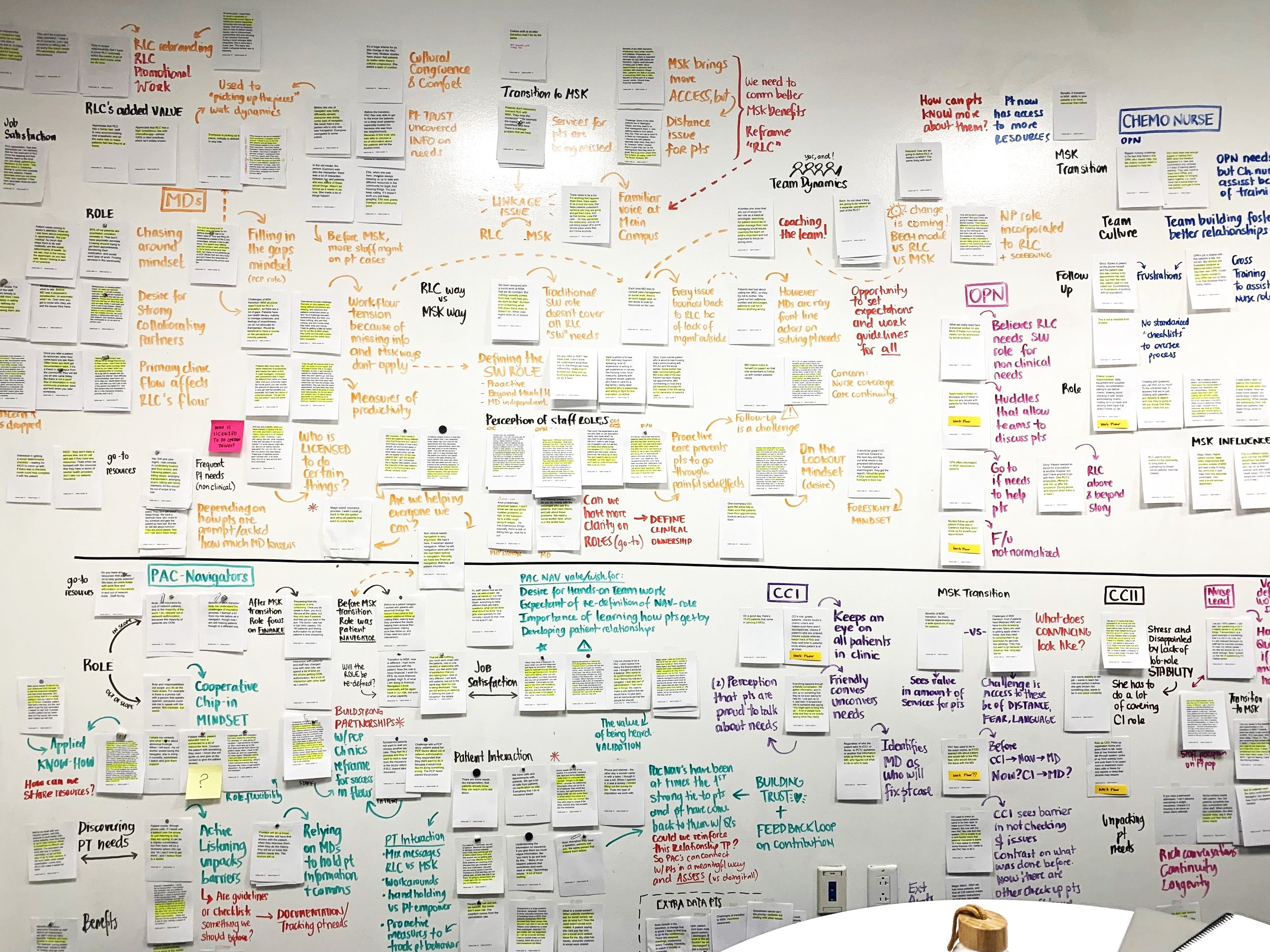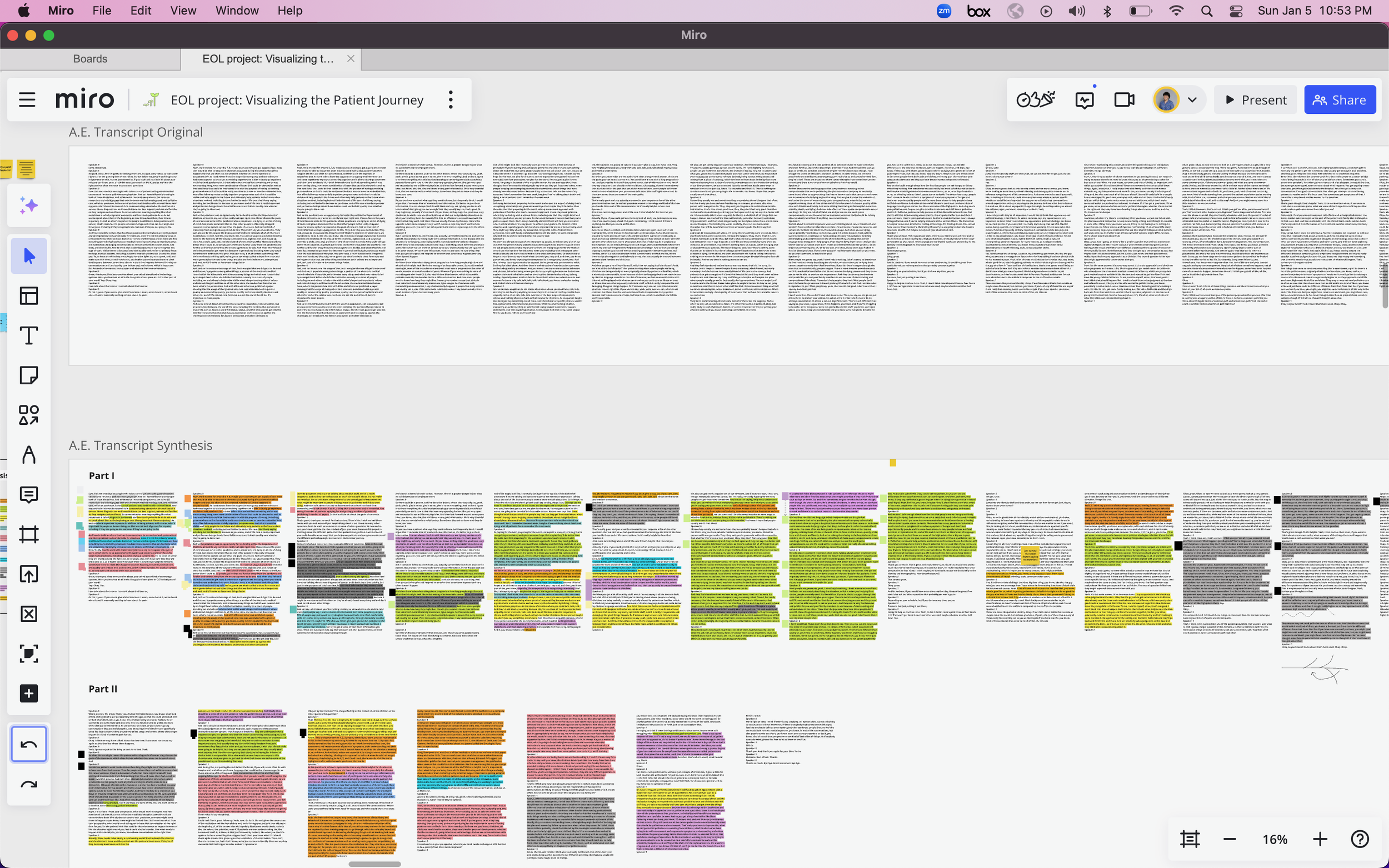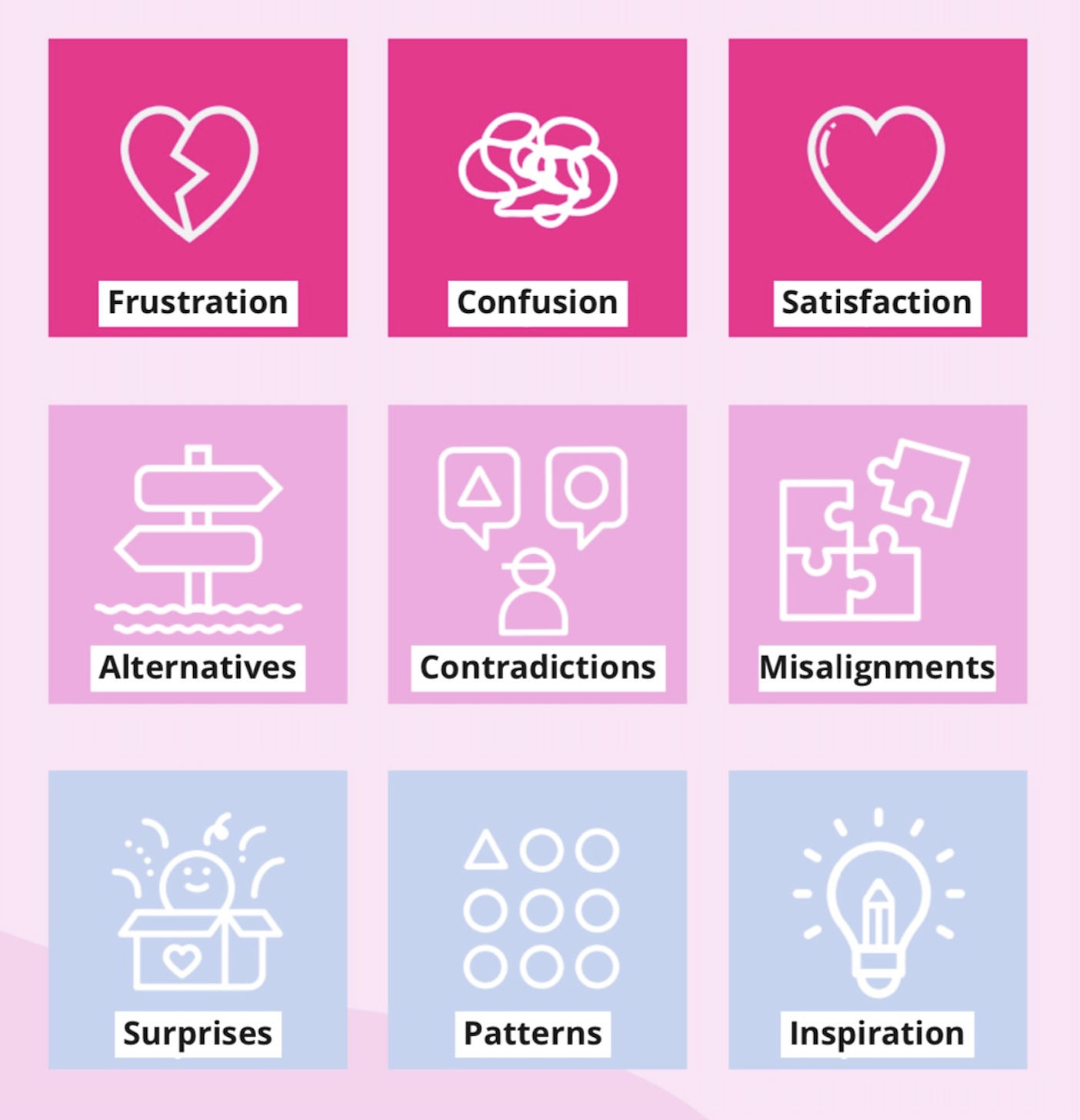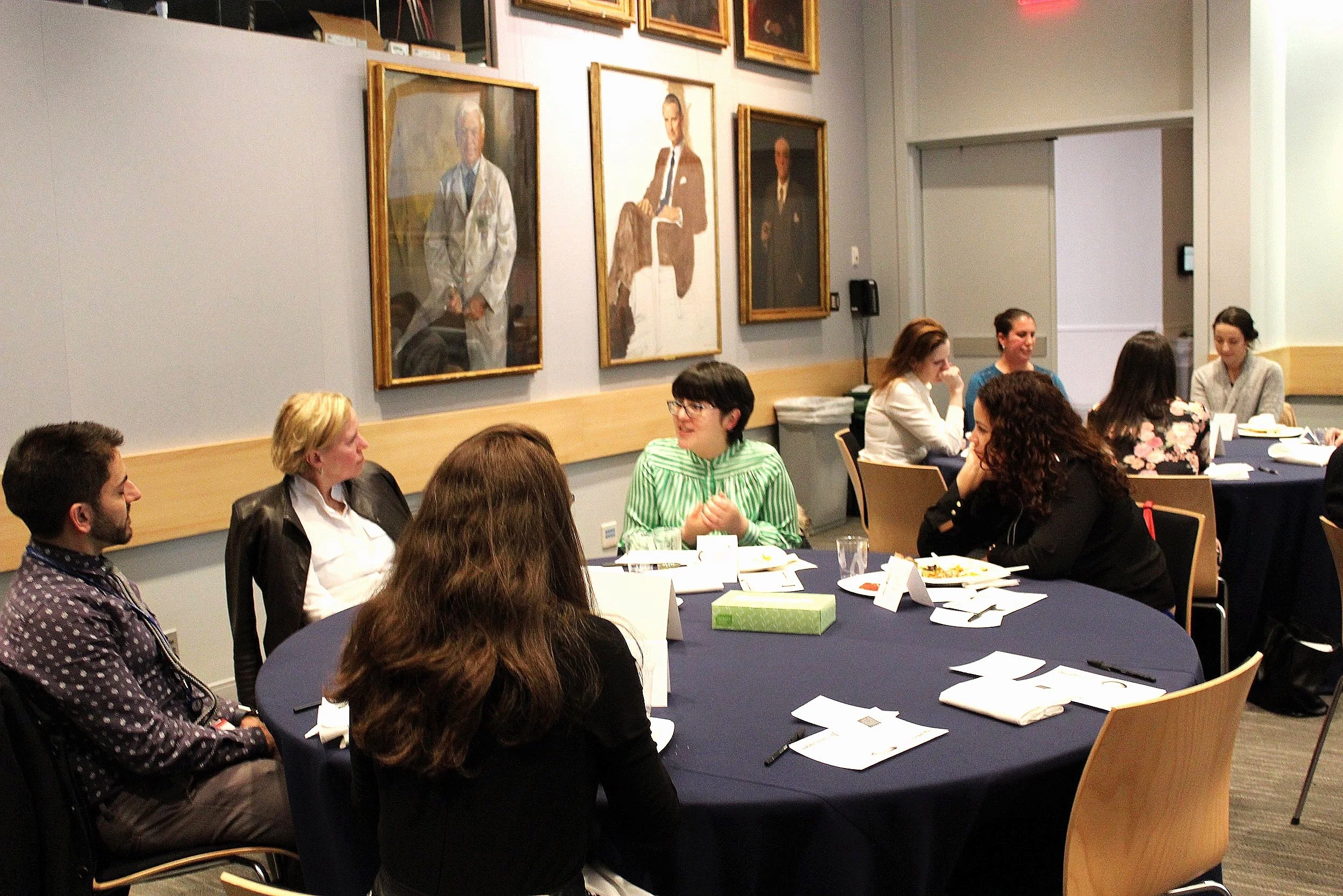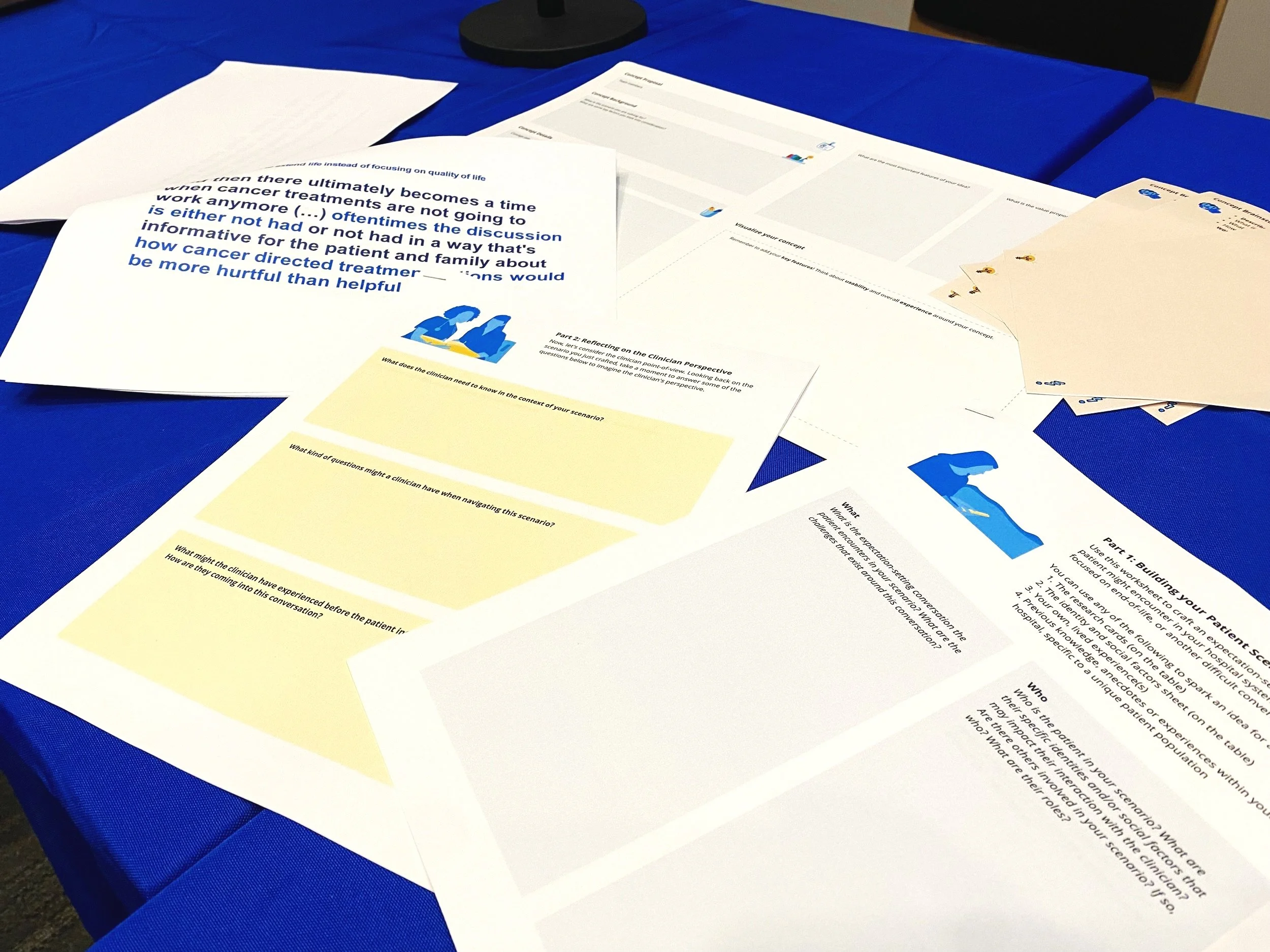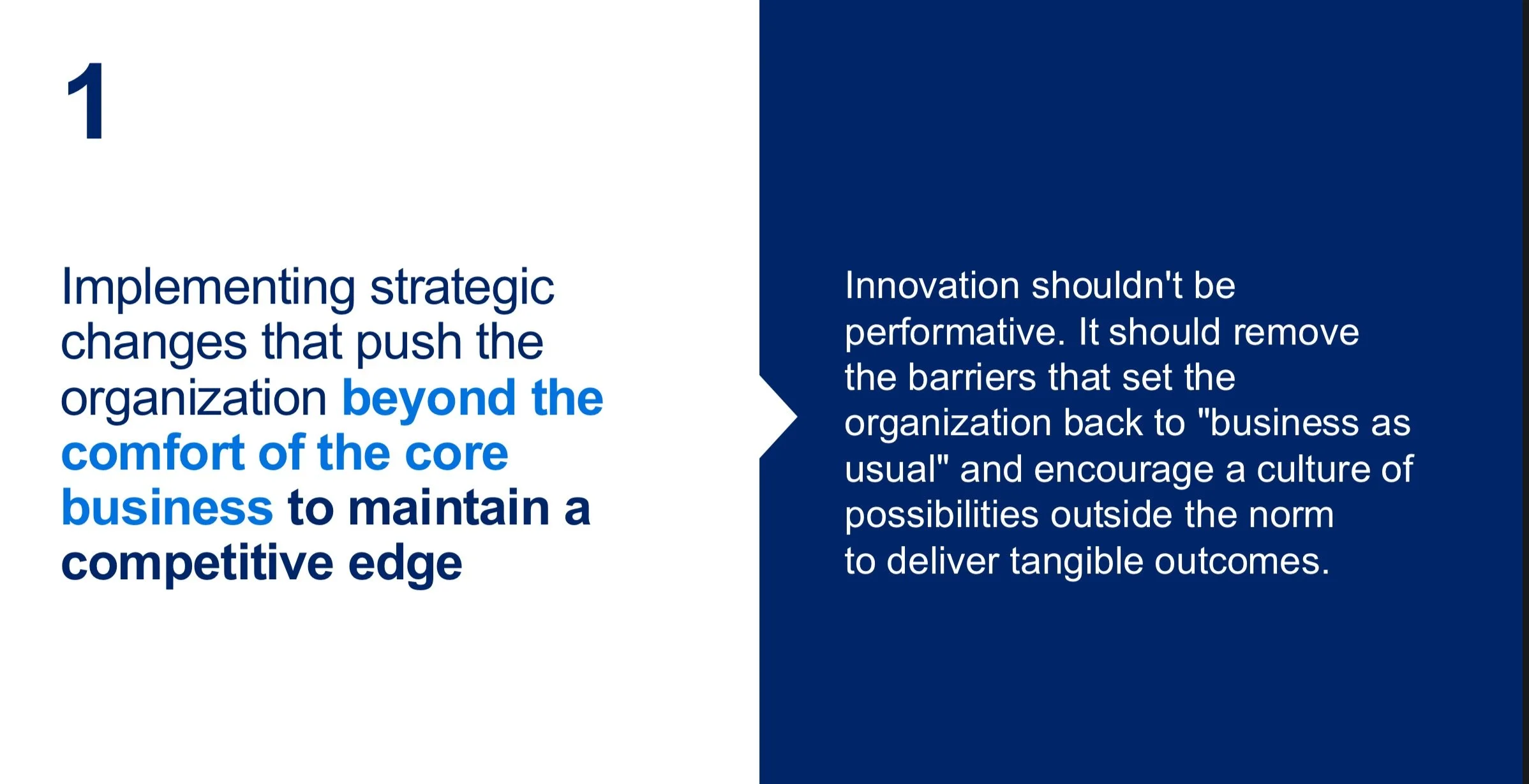Portfolio
Below are case studies from my experience at Memorial Sloan Kettering Cancer Center (MSK).
I've highlighted some of my projects related to design strategy, design research, facilitation, and culture.
Design Strategy
I was tasked with thinking through, designing, and training the 20+ facilitators of the Leadership Summit. For this assignment, I created a step-by-step facilitation guide for the event. Training the facilitators consisted of three coaching sessions plus asynchronous Q&A.
Additionally to this task, I supported the conceptual thinking, building, and installation of all workshop materials. A successful activity we planned consisted of four interactive exercises:
Gauging impact: Which strategic priorities or initiatives your team or department might be impacted by?
Aligning to the strategy: Discuss ways you can align to the strategic priorities and initiatives.
Identifying ways to change: Examine what change you need to implement to support the alignments.
Seeing what other groups think: Gain visibility into other groups' ideas to connect the dots and see potential synergies.
The MSK Strategy & Innovation division drafted MSK's 2030 Strategic Framework in collaboration with its CEO. The summit invited senior leaders to revise, discuss, and provide feedback on the institution's direction.
Case study
Designed, planned, and moderated an organization-wide Leadership Summit with over 170 senior leaders on what the institution will look like in 2030.
Case study
Started a grassroots DEI initiative called Equity & Anti-Racism (EAR), which focused on developing tools and frameworks to improve our team's design practice, such as analyzing the unintended impact of our design work.
I wanted to explore how our individual and collective design practices are inequitable or biased and how we might transform them. After conducting interviews with team members to better understand their obstacles to integrating equity and anti-racism into their work, we synthesized key challenges. We identified several; however, the one I requested to work on was related to examining unintended impacts: How might we structure reflection on the potential consequences, harms, and benefits of the ideas we generate?
I developed a prototype Considering the Unintended Impacts Guide. The EAR core team supported team members in testing our prototypes within their projects. After several iterations, the guide became well integrated into our team design practice.
The guide contains four main chapters:
1. Introduction: Reflecting on accountability
2. Setting the foundation: Team Alignment
3. Intended impact: Ethical values framework
4. Unintended impact: Harm considerations scenarios
Design Research
Case study
Setting expectations around end-of-life care
This project aimed to learn from clinicians how to improve conversations about expectation-setting within a patient's journey and capture their perspective on how MSK should address end-of-life and goals-of-care conversations with patients.
My team and I conducted 1-hour interviews and interactive prompts with 10 clinicians across various sub-specialties who were primary advocates for end-of-life matters at MSK. Our interview questions focused on:
Current practices around expectation-setting
DEI factors that influence end-of-life conversations
Mapping patient journeys, scenarios, and communication touchpoints
Ideal ways to set expectations
We executed a rigorous synthesis approach using interview transcripts and color-coded insight categories to identify patterns across all interviews.
The insights we crafted covered big-picture topics such as institutional context, the relationship between DEI factors and poor outcomes in delivering end-of-life care, and more tangible topics such as patient and clinician needs and the use of language and terminology.
Case study
Design Research introductory educational module
I developed a learning session about design research and tactics to deeply understand the challenge and foster actionable insights.
Via a case study, the class analyzed interview guides and other research methods in detail.
Some tactics taught when conducting interviews:
Introducing yourself and warm welcome talking points
Ask about the participant's role, tasks, and responsibilities
Search for pain points and successes
Workarounds
Ask the participant to define things
Ask about relationships/team dynamics
Magic wand question
We also reviewed what to look out for when doing synthesis work.
Facilitation
Case study
Moderated Death Over Dinner events for 5+ years, which involved connecting patients, caregivers, and hospital staff in conversations about death and dying
Case study
Led a workshop at the Raise Your Voice 2023 Symposium with Patient and Family Advisory Council for Quality (PFACQ) groups from 17 cancer centers across the US
Culture
Case study
Worked on an initiative that supported front-line staff amid the COVID-19 pandemic by collecting testimonies, illustrating narrative highlights, and planning a gallery walk of the employees’ stories
Case study
Led projects such as MSK Ambassadors: Employees as Members of their communities, which equipped employees with information to represent the organization and promote preventive care
Case study
Developed a report titled Setting the foundation for establishing an innovative culture. The context of this work was that our team had an internal goal of equipping hospital staff with design capabilities to pursue their innovations. I proposed to the team that we must step back and analyze the mindsets, environments, and systems in place. Was our institution enabling a conductive for an innovation practice?
